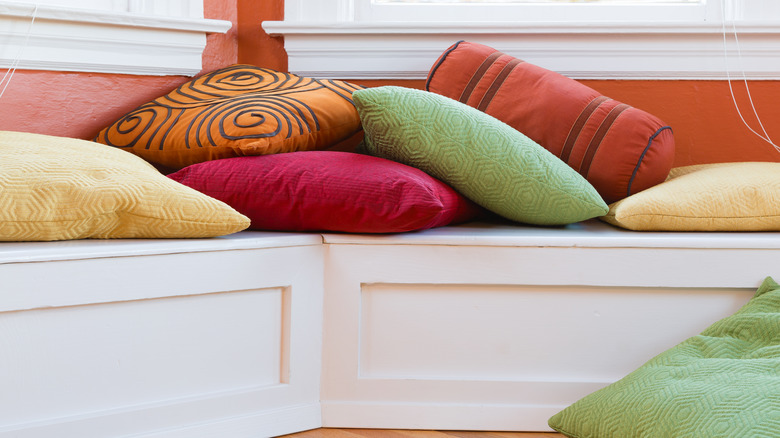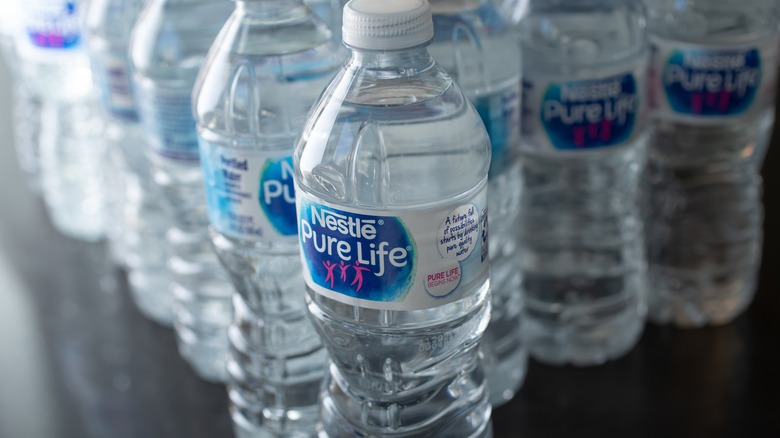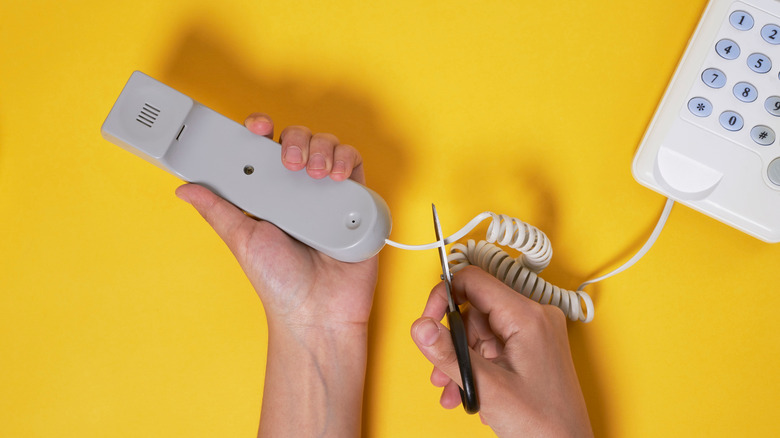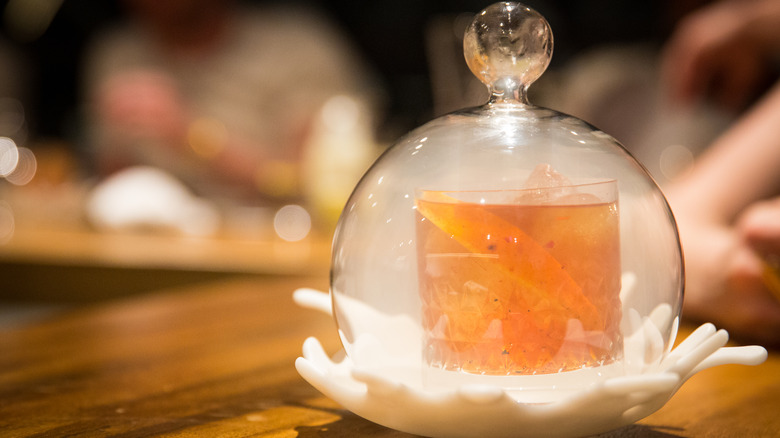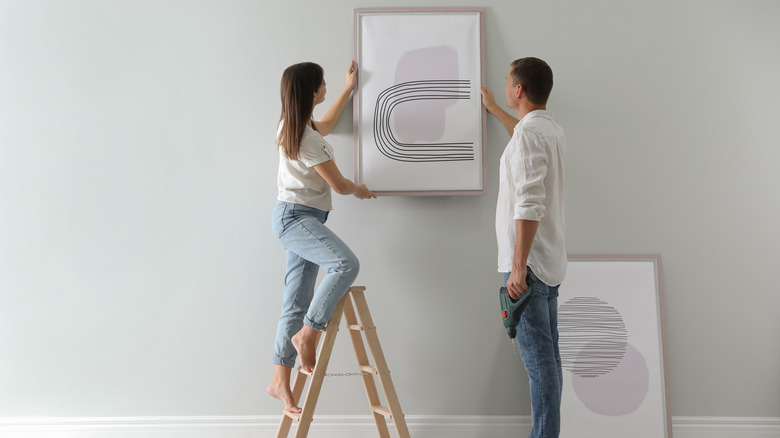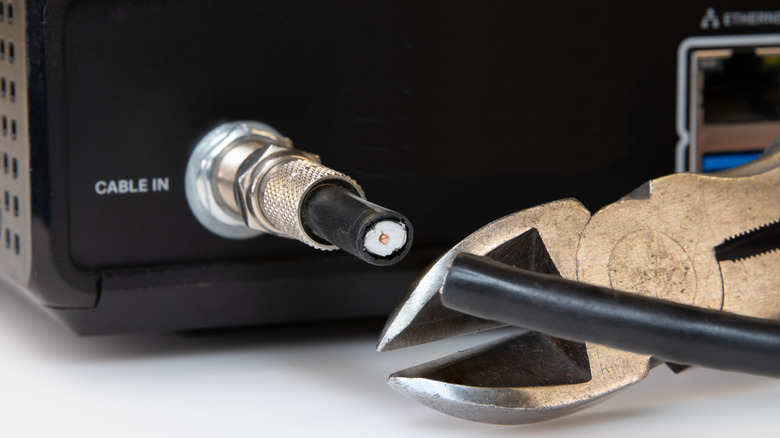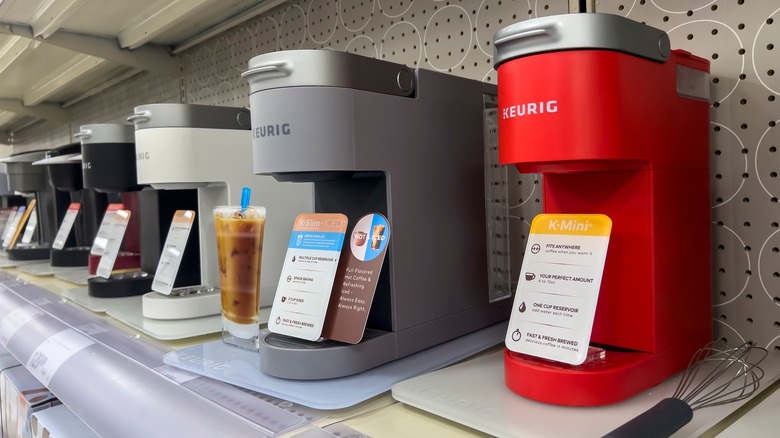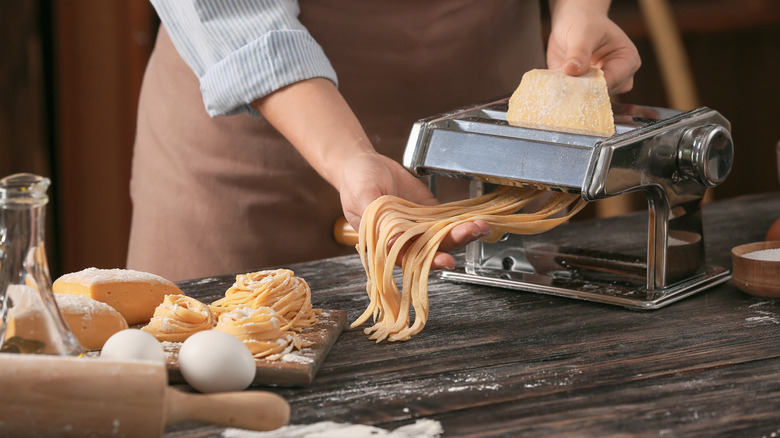9 Things In Your House That Are Just Taking Up Space
Your big goal in life is not to have a clutter-free home. What you actually have is a second-order desire: the desire to want to care more about decluttering. Well, give it up. You don't care about it as much as other things, and you shouldn't. Anna at courselounge says we should be living intentionally and with purpose, and our stuff should reflect that, but culture fights against this at every turn. We're encouraged towards passive consumerism until it sinks in and acquiring stuff becomes a major way we avoid pain and seek pleasure (via Ivaylo Durmonski).
A better goal is to get rid of things that don't enrich your life or, worse, strip meaning and pleasure from your life without adding anything worthwhile. This is obviously a very personal undertaking. Some people's lives are enriched by pastries, some by Pastebin, and some by Paste magazine. So this list is more like a set of examples to get you thinking about what you do and don't want for the right reasons. The word "want" is important here. A list of things you don't need could include almost everything you own. It's wanting that matters, and we want some things that add to our lives and some that don't (via Pickup Please). Living intentionally means, in part, having stuff that complements the lives we want.
Throw pillows
Throw pillows might not seem like a particularly important place to start eliminating things from your life, but it's an instructive example. Things that look good, but don't provide any value, are one thing. Things that look okay but actually are a pain in the rear, are a whole other matter. And throw pillows sometimes don't even look that great. Worse than that, they're genuinely annoying. Jackie Hernandez of School of Decorating found that getting rid of hers made her house neater, eliminated lots of special cleaning she used to do because of dog hair, and (perhaps most importantly) allowed her family to have a seat without first having a cleanup.
Mary Grace Garis offers up an eloquent and hilarious indictment of throw pillows, which she calls "anti-comfort monsters." Garis says that decorative pillows became a symbol of affluence in the Victorian era (via Well+Good), and have since spread (like cholera, she says) to the masses. Her theory is that they've come to symbolize a coziness that they don't actually contribute to, while generating misplaced sympathy like children's stuffed animals.
This boils down to an uncomfortable truth we all kind of knew already: Decorating is, itself, an act of incipient messiness. Rather than occupying a museum of artfully arranged objets, we live in a world where the objets get over-purchased, tossed around, placed precariously, knocked over, and left for someone else to deal with. This kind of decorating most improves the look of your home when you eliminate it (via Lovely Etc.).
Specialty glassware
Any reasonable person can see the value in a brandy snifter. It makes your cognac better by doing some physical work. And things don't even have to offer physical advantages to be useful; half the fun of drinking a scotch neat is wielding a rocks glass with swagger. But you can get carried away — and if you own sherry glasses, champagne glasses, or both martini and margarita glasses — you probably already have. For example, a martini glass is a spill planned but not executed, and the best you can hope for is to spill it in your mouth faster than on your throw pillows. We have the technology to eliminate martini glasses, and champagne and margarita glasses at the same time with the coupe glass (via The Strategist).
You'll also need a rocks glass or two (as we've established already), and highball glasses (or, as they're known in America, "glasses"). You're welcome to a Nick and Nora glass so long as you never say its name out loud, but if you have champagne flutes, white wine glasses, red wine glasses, and Nick and Nora glasses, you clearly have a glassware problem. Choose one and drink faster so you don't notice the horribly degraded drinking experience that results. (Of the tiki glass, wickedest of Dionysian inventions, we shall not speak nor give direction.)
Greeting cards
Most people reading this, including every mom, just gasped. Surely, we aren't suggesting you throw away those cards from grandkids, cousins, and insurance salespeople. We are, but, you should keep what you want to keep — though it might be better if you keep digital photos of your cards instead. In fact, this might be the real point: Maybe it's time to think differently, and possibly digitally, about some of the things in our junk drawers. In this case, greeting cards can be stored like tons of other types of documents. In fact, a service like Google Photos would work in a pinch, especially for something as simple as greeting cards and a few super-important documents that you don't mind manually organizing.
We're also suggesting that you stop buying greeting cards altogether. Most people reading this, including every mom, just stopped breathing altogether. But how could we not suggest alternatives to greeting cards, given that we just told you to throw yours away? We probably should have added this next bit sooner: Replace them with things that simply mean more. There are nifty commercial alternatives like Tellinga, personalized postcards, art prints from Etsy, and these cool little photo albums. But what you should really consider is just hand-making the cards. However simple they are, they'll actually mean more than a store-bought card that doesn't quite fit.
Bottled water
You're probably focusing on durable goods when it comes to eliminating pointless stuff from your life, not mere plastic water bottles. But plastics have become so common and important even to geology that some are cheekily calling our current age the Plasticene Epoch instead of the Anthropocene, according to an editorial in the science journal Elements. You'll save more space and become healthier (and greener) by eliminating bottled water.
Many people choose to drink bottled water because they know it'll be up to a certain health standard. The CDC says that outbreaks do happen and are underreported, but that all bottled water companies must follow the FDA's rules and regulations. It's safe to say that the FDA standards for quality and sanitary manufacturing practices have been effective, but some aspects of quality have escaped the rigorous testing procedures and inspections. A 2018 study found microplastics in 93% of samples tested (via Frontiers). We don't know as much about it as we need to, but there are studies indicating that this could be harmful to human health in the forms of toxicity, metabolic disturbances, neurotoxicity, and increased cancer risk (via Science of The Total Environment).
And, of course, there's the environmental problem. Recent research extrapolates that bottled water might be as much as 3,500 times as destructive for the environment as tap water, but you knew that already. Interestingly, the same study also showed a big increase in bladder cancer when tap water was used rather than bottled water, but the overall benefits of avoiding bottles were clear (via Science of The Total Environment). Just don't forget to clean your reusable water bottle!
Landline phones
Landline phones are still around, and no one knows why. Well, okay, we do. It's a combination of concerns about reliability, concerns about the whole idea of cell phones, and simple inertia. But at this point, even the AARP has gotten on board with replacing landlines with cell phones, and that should be the end of the story. Cell phones are, according to the AARP, now as reliable as landlines (including for 911 access), and there are no real quality advantages of other benefits of landlines for the elderly, the last big group of holdouts. One reason some households still hav landlines is that, for some, it can be cheaper to have one bundled with your internet and cable services, than to simply not have one at all (via U.S. News and World Report). This absurdity is not a reason to keep your landline — it's a reason to change your internet provider to one more aligned with the current times.
Smoke infusers and deep fat fryers
Specialized things are ones you acquire (and maybe even use) when often another thing might do just as nicely. You see this a lot with kitchen gadgets like smoke infusers and deep fat fryers, which many of us noticed because of Alton Brown's rants against "unitaskers" back in the early days of Good Eats. Unitaskers, Brown told NPR, are good as "strategic gifts for people you don't like." Enter the Smoking Gun, a device for imparting smoke scent and flavor to food and drinks — though, we could just as easily be talking about ice cream machines or popcorn poppers here. These are classic unitaskers. Chefs sometimes have these sorts of things on cooking shows and in restaurants because they need to cook the same things, frequently, and for a lot of people. The funny thing about most of these specialized gadgets: you enerally don't need them, since there are other ways to get those things done.
Infusing food and cocktails with smoke can elevate the most mediocre of creations, and sure, you can buy a Smoking Gun or a stovetop smoker as described by Gear Patrol, but David Hughes on YouTube shows you how to do it with a sieve you probably already own. Or, you can do it with a simple steamer basket (via WonderHowTo) or by just lighting some wood chips in one end of a deep, covered pan with food to be smoked at the other. As for deep fryers, advertising copy never seems to mention that they are expensive, dangerous (via Unsafe Products), smelly, and difficult to both use and clean. You can eliminate almost all of those problems by avoiding the fryer and just improvising one with a deep pot and thermometer you might already have in your cooking arsenal (via Modernist Cuisine).
Fine art
High-minded people probably think this is the cultural nihilism version of the greeting card advice, but seriously, aside from that one-in-a-million art investment that pays off (via Investopedia), what you're hanging in your den is eventually going to look more like regret and buyer's remorse than primitivist expressionism (whatever that is). Adam Ruins Everything calls fine art a "massive price-fixing scheme" (via YouTube). The strategies of auction houses range from the comical "chandelier bidding," in which auctioneers pretend to see bidders to drive up the starting bid, to guarantee-and-discount arrangements, that mean some bidders drive up the price of artworks knowing they will pay millions less if they win the auction, or take home a hefty "financing fee" if they don't (via the The New York Times). So, the deck is stacked heavily against outsiders and casual collectors, and investment is probably not a practical goal. The Abundant Artist Association is an organization started to provide the artists themselves with resources for working outside of the dealer system because "so much of the fine art world is a scam" (via The Abundant Artist).
But the real point is to adorn your walls with things related to your life that you actually care about. Frame the creative works of your children or your aunt. Buy a Cricut machine and make something interesting yourself. Or, why not just paint something yourself? Looking at all the rationales for private art purchases (via Artwork Archive), there's no reason some or all of them wouldn't apply to you as an artist, or a painter selling $100 canvases at a local coffee shop instead of $10 million works at a corrupt downtown gallery.
Cable TV
If you think cable isn't taking up space, compare your cable box with an Amazon Fire TV stick, or Roku, etc. But space isn't really the issue. The question is: Has the time arrived for you to join the ranks of cord-cutters? Cable companies are essentially aggregators and deliverers of content created by other companies. If you have a high-speed internet connection (and you probably do), you can do this aggregation for yourself by switching to streaming services, many of which offer about the same content as cable providers.
But, why bother? Even if you save money, it won't be a lot. Most cord-cutters are seeking savings, and almost a quarter opt for completely free options in place of cable — but that's not the only motivator. Only about a third of people are happy with their cable services, and many cite the improvements in quality and choice they get by focusing on streaming services instead. Streaming devices are inexpensive, and if you own a smart TV, you're probably already ready to cut the cord (via Tom's Guide).
Keurig coffee makers
As environmental consciousness continues to rise, and managing expenses is on the minds of more and more Americans, it's time to start questioning the primacy of Keurig in the coffee maker space. They're expensive, mediocre, and a bit of an environmental disaster. In late 2020, Keurig announced that all of its coffee pods were 100% recyclable, according to Delish, but that's more a hypothetical than anything else. In fact, the plastic Keurig chose was polypropylene, which is the plastic least likely to be recycled.
Reviewed's Courtney Campbell makes the case that it costs about twice as much for a cup of Keurig coffee as the same ground coffee. Ed McGuire of Whole Latte Love makes the argument, albeit a somewhat strained one, that in the long term, you could be drinking Maromas Orphea prepared in a Gaggia Brera (read: expensive coffee from an expensive coffee machine) for less than half the price of your Keurig coffee. If you have one, It's probably time to move on. You can save space and money — and usually get better coffee — by using a pour-over coffee maker or a French press.
Contrarian bonus: Things you should use instead of getting rid of them
If you are seeking a richer, more meaningful life, there's some stuff you actually need. People offering decluttering advice will go overboard sometimes, forgetting that even messy people do sometimes make (and benefit from) well-considered choices. For example, a bread machine can be a target for decluttering, but bread machines simplify a task, do nearly all of the labor for you, and return a product to you so fresh and flavorful that you almost can't buy anything comparable (via Baking Kneads). Why not try using it? (Hint: discover the joys of adding buttermilk powder to your bread recipes.) Pasta makers have a similar story, except that you'll increase your labor 1000-fold in exchange for pasta that's a thousand times better. This is a great project to do with kids, and if they're old enough to clean up after, there's really no downside. While you're doing all of this cooking, hang on to your cookbooks (the ones you use, at least). The digerati might tell you they're pointless, but when you're actively working on an aesthetic experience, like good food, it's senseless to then deprive yourself of the fantastic cookbooks out there in exchange for a mechanical online experience that's more SEO than pleasure.
Try to think of old technology you have lying around as opportunities for enrichment and as an alternative to decluttering. Install a bootable Linux OS on a USB drive and brush up on your IT skills or have a secure way to use computers on the road (via USB Memory Direct). Musicians can install Ubuntu Studio or AV Linux on an old computer and instantly create a dedicated audio editing workstation. You get the idea. Do (and have) things intentionally when they make your life better. Otherwise, get rid of them.

